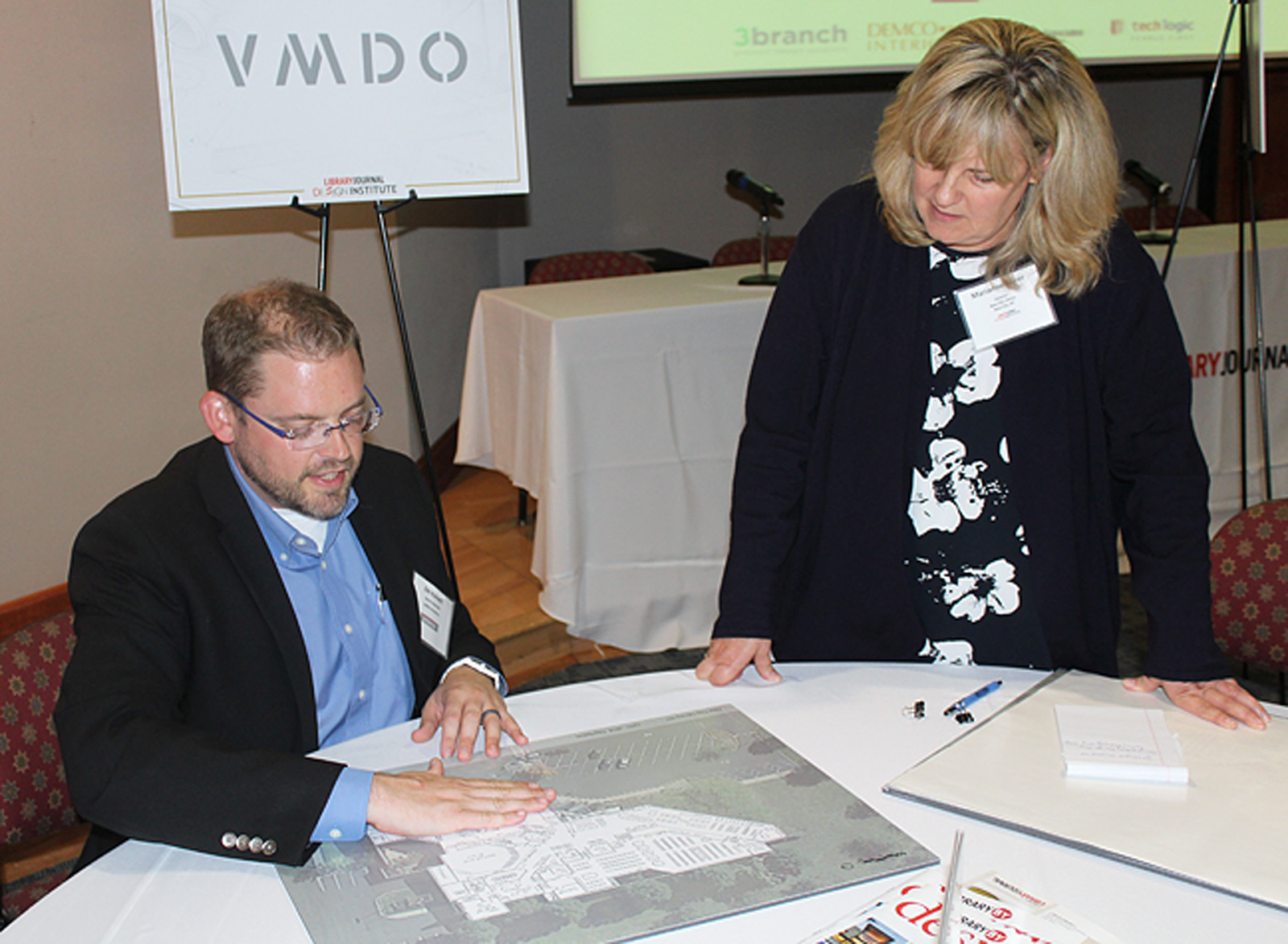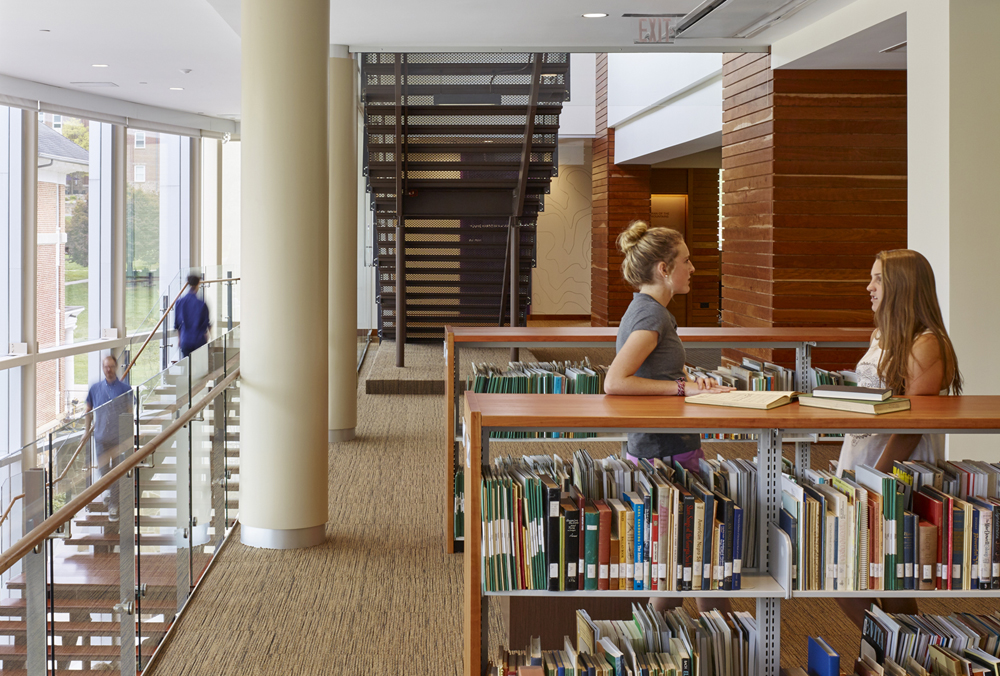Public libraries have been "second responders," writes Deborah Fallows for The Atlantic – distributing services admist varying backdrops of crises for decades.
"In Ferguson, Missouri, the public library stayed open when the schools were closed after the riots, to offer the kids a safe place and even classes taught by volunteers. After the hurricanes in Houston, some library websites were immediately up and running, announcing that they were open for business. After Hurricane Sandy, some libraries in New Jersey became places of refuge. And in the Queens Library’s Far Rockaway branch, which didn’t have heat or light, the librarians set up shop in the parking lot to continue children’s story hours to give them a sense of normalcy." —Deborah Fallows, The Atlantic
It should be no surprise, therefore, that libraries have responded swiftly to the COVID-19 pandemic, in the tradition of ingenuity and reinvention that has defined their presence in American life.
"Even before librarians closed their doors against the pandemic, they started moving fast to keep their work going. They began shifting regular programming online; distributing stockpiles of mobile technology to the digitally needy; strengthening partnerships with schools and food donation sites; activating their maker-technology to produce PPE; helping prepare the homeless population with alternatives for shelter; and more." —Deborah Fallows, The Atlantic
As plans for re-opening develop, libraries continue to find creative ways to serve communities. Across the country, drive through pick-up options for books and other resources are becoming available, libraries are moving services like application assistance online, and library staff are finding creative ways to program virtual events like book clubs and cooking shows for adults and homework help and summer reading for students.
According to Marianne Gallagher, the Director of the New City Library in New City, New York, "staff have thrown themselves into learning video technology to produce storytimes, digital instruction, and local history content." The library's YouTube channel has exploded with book reviews and recommendations, research assistance, and technological how-tos. This programming pairs with increased online collections for ebooks, audio books, videos, and even genealogical sites likes ancestry.com.
"Today's public library is no longer about books. It's about people. People who use their library don't talk about the difference the books at the library have made. They talk about the staff. Staff who have made the extra effort to help them with finding hard to secure materials, who put the right book in their hands at the right time, who assist them with tricky genealogical research, who taught them how to email or apply for a job online, who made the library a welcoming respite from the challenging world they face."—Marianne Gallagher, New City Library Director
VMDO library designer Jim Kovach, a New York native who grew up going to New City Library, recently checked in with Marianne to see how she and her staff are adapting during COVID-19 and what the library may look like in the future. Jim and Marianne developed a Master Plan for the Library to ensure it continues to serve community members with quality spaces that are flexible enough to endure, even a pandemic like we're experiencing now.
 VMDO's Jim Kovach and New City Library Director Marianne Gallagher collaborate during a Library Journal Design Institute.
VMDO's Jim Kovach and New City Library Director Marianne Gallagher collaborate during a Library Journal Design Institute.
Q1. Jim Kovach
What do you think are the biggest immediate uncertainties facing public libraries during and after the COVID-19 pandemic?
A1. Marianne Gallagher
One immediate uncertainty is the return to circulation of physical materials. There were already people who would not use their public library due to concerns about the cleanliness of the materials; now, with a pandemic, I fear many more people will feel it’s not worth the risk to handle items that have been shared multiple times over with strangers.
If physical circulation drops and e-content continues its ascent, this becomes a serious budget issue. E-content is not owned by a library; the library pays for the access to the material. That’s done in a few different ways: metered access, cost per circulation, etc. Any of those methods forces the library to pay so much more to meet demand.
Q2. Jim Kovach
For many years, libraries and librarians have been expanding the type of services they provide the public. Do you foresee new services being offered as the result of the pandemic? Will other services wane or disappear altogether?
A2. Marianne Gallagher
My staff is very creative and they are developing new ways of offering services. For example, our local history librarian, Joe Barbieri, has started making some great video content. I joke that he is our own Ken Burns. With all of the digitization we are doing of our local history collections, we are working on producing more digital content that can reach people where they are.
The way we offer the internet has to change. Twelve people tethered to one table is not going to work anymore. I’m sorry we only just replaced all those stations! Laptops would have been the way to go. I’m also thinking of getting rid of the PACs (public access computers). People can see the catalog on their phones. Having a dedicated, germ-y computer station doesn’t seem too attractive right now.
We may expand our hotspot lending and Chromebook lending out of the library to address the toll the economic situation is taking on families. I think curbside pickup might remain as a service even after the pandemic.
We have been making a valiant attempt at producing digital programming, but I don’t think it will ever be our strong suit compared to professional and commercial offerings. We have decided, however, to make our Storytime Room, for now, a video production place. The video equipment could be added to our makerspace for patron use once it is safe to do so.
Q3. Jim Kovach
What, if anything, did the New City Library do in reaction to the changing dynamics of patronage over the course of the early stages of the stay-at-home orders in New York?
A3. Marianne Gallagher
We invested in our online collections, established remote access for Ancestry.com (which we've never offered before), and increased the monthly checkout limits for Kanopy (films) and Hoopla (ebooks, digital audio, TV, films, etc.). Staff also threw themselves into learning video production to produce storytimes, digital instruction, and local history content. Only now are outside performers and artists coming around to the idea of doing programming virtually like concerts and lectures.
Q4. Jim Kovach
How do you imagine the physical conditions of the library will change as users begin to return to your facility?
A4. Marianne Gallagher
I think the physical conditions of the library will be quite restricted at first with: closed stacks (all circulation done by reserves and curbside delivery), sneeze-guards at service desks, internet stations placed further apart, in-house lending of laptops to allow social distancing, and minimal seating to discourage extended visits.
Down the line, the library as community center must return. Individual study spots could be partitioned and perhaps be the first offering of space usage by the public. Group study and events should return later when social distancing rules are relaxed.
I would imagine an increase in materials that could be disinfected easily without damage to surfaces. Less cloth seating, less carpet, less touchable surfaces. Interior designers will be challenged with creating inviting spaces that don’t look too sterile.
A lot more features that would reduce contact include: touchless toilets, faucets, and water fountains, motion-activated lighting, automated material sorters, and checkouts through mobile phone apps.
Q5. Jim Kovach
Are there any stories you'd like to share about your experiences, or those of your staff, that best capture the spirit of the New City Library’s dedication to its mission – "Connecting people, information, and ideas" – during these challenging times?
A5. Marianne Gallagher
Maybe that the two hardest working and most prolific individuals on staff during this library closure are people that have small children climbing all over them as they work! Veronica and Brian. I don’t know how they do it. I don’t think I would have fared well if I had small children at home during this. Veronica taught herself video editing so that she could put a little polish on the raw content other staff were producing. She is mastering Zoom so that she can offer different types of programming and training. Brian is dedicated to getting digital materials to patrons, offering digital instruction, and working with Joe Barbieri to provide local history content.
Mary Phillips, who is an accomplished gardener, is sharing video of her home garden and offering gardening advice. Kathy Bachor, our children’s librarian, is doing “Nature Walks” which are bird-watching videos. I think both librarians have added a personal touch that is endearing and “local.” And Matt Aull, who runs our makerspace, has been producing parts for face shields and for frontliners with our 3D printer running 24/7 at his house.

